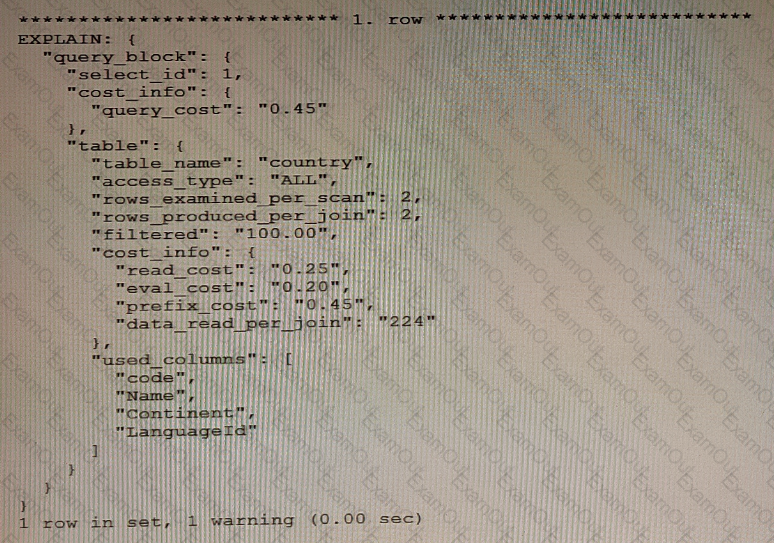Examine the output:

Which explain command will obtain the output?
Examine these commands which execute successfully in the sequence shown in Sessions S1 and S2:

Now, examine this statement that execute successfully in s1:
S1> SELECT * FROM emp;
Which is true about the result of the select statement?
Examine these statements which execute successfully:

The statements executed without exception. Which two are true?
Examine this statement and output:

Which will provide the same level of detail when the error is encountered within a stored routine?
A)

B)

C)

D)

Examine this SQL statement:

Examine the layout of the my_values table.

Examine the data in the my_value3 table.

Examine this statement:

A)

B)

C)

D)

Examine these statements issued from Session 1 which execute successfully:

Now, examine this statement issued from Session 2:

What is the outcome of the update statement in Session 2?
Which two statements are true about AUTO_INCREMENT?
Examine these lines of Python code:

You must add a line of code to complete the code to return data to the variable d. Which line will do this?
Examine the contents of these tables:

Now examine the expected results for a user with privileges to access the table:

Which query returns the expected results?
A)

B)

C)

D)


